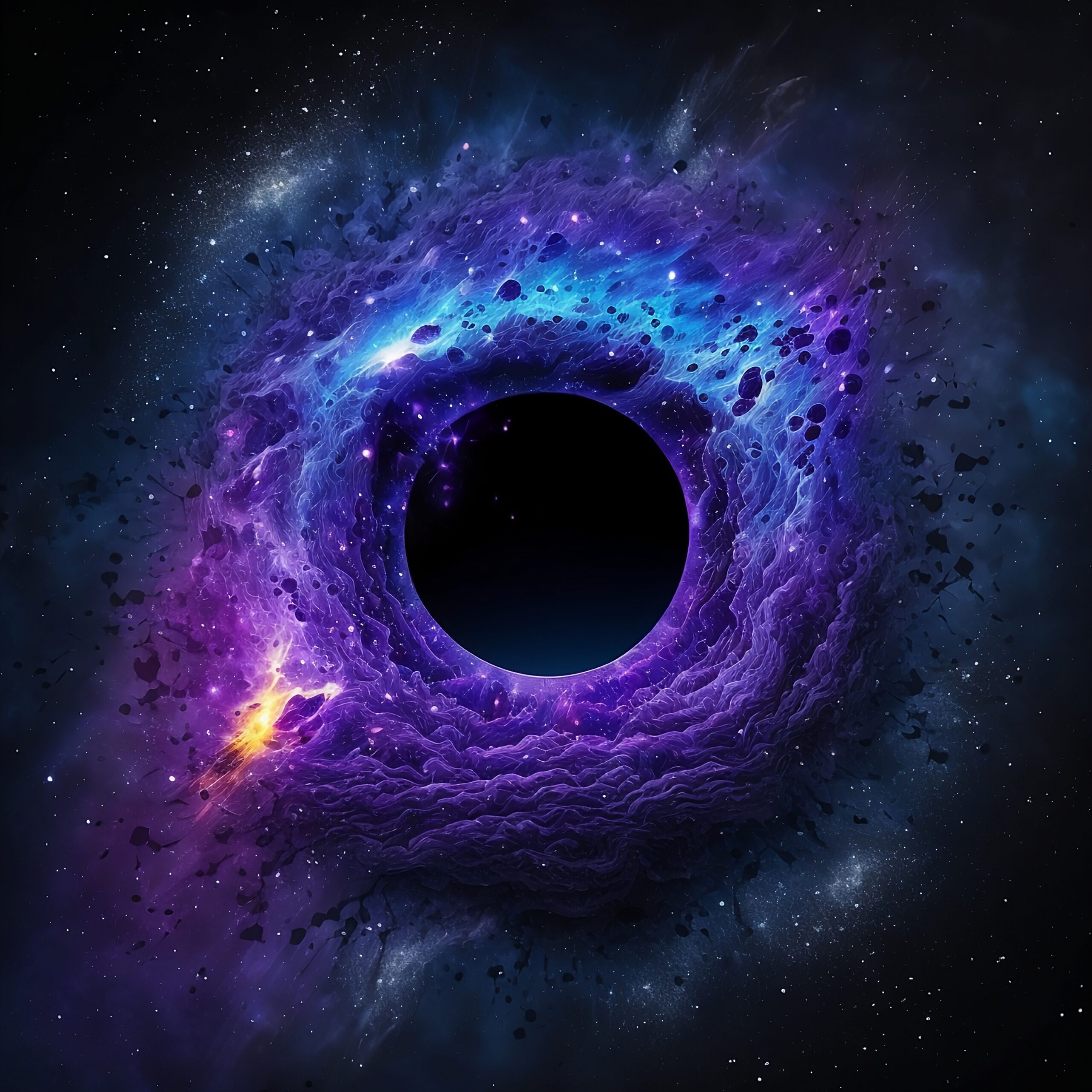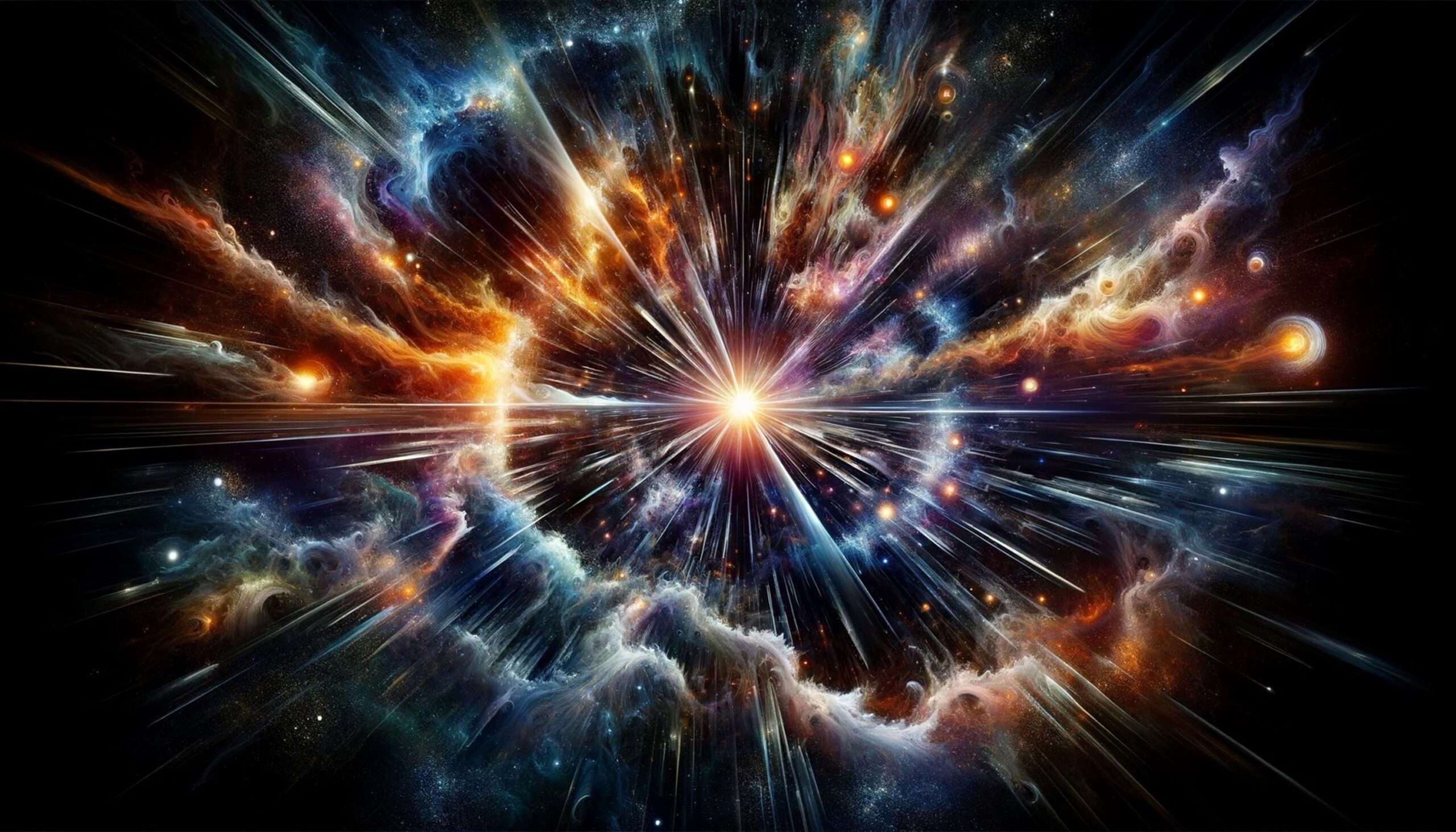Did you know that a single supernova explosion can shine brighter than an entire galaxy?
What is a Supernova?
A supernova is a massive explosion that marks the end of a star’s life when it can no longer maintain nuclear fusion. During this intense event, the star collapses and then erupts in a dazzling burst of light and energy, sometimes shining brighter than entire galaxies for a brief period. Supernova play a crucial role in spreading heavy elements, such as iron and oxygen, into space, which are essential for the creation of new stars, planets, and even life itself.
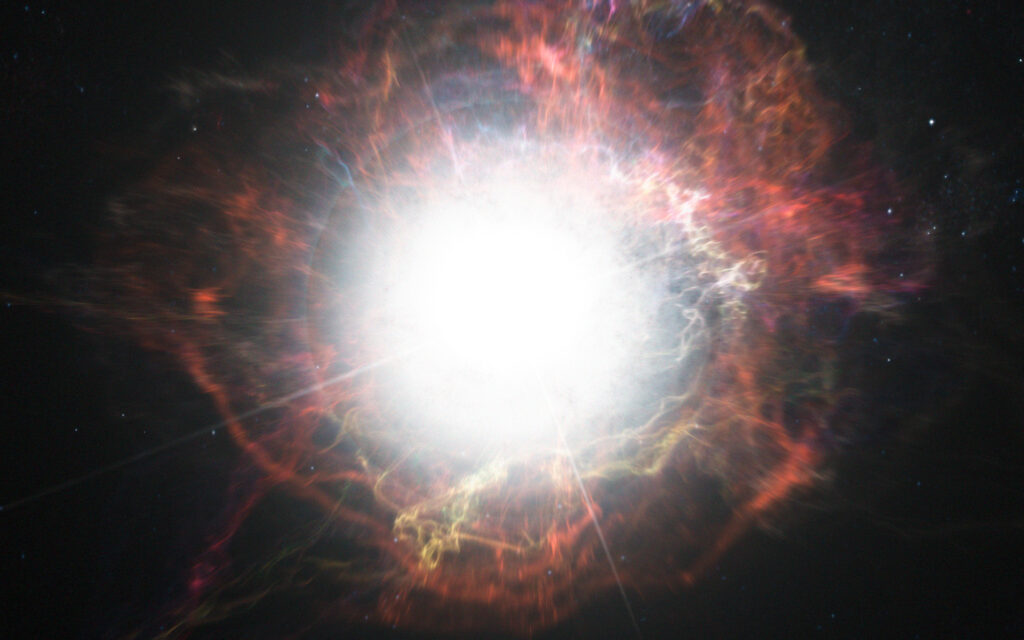
Attribution: ESO/M. Kornmesser, CC BY 4.0 https://creativecommons.org/licenses/by/4.0, via Wikimedia Commons
Page URL: https://commons.wikimedia.org/wiki/
What are the types of supernova?
Supernova are primarily classified into two main types, distinguished by their different causes and characteristics.
Type – I
This type of supernova happen in binary star systems where one of the stars is a white dwarf. As the white dwarf draws in too much material from its companion star or merges with it, it surpasses its critical mass, triggering an uncontrollable nuclear reaction and a massive explosion. One distinguishing feature of type – I supernova is the absence of hydrogen in their spectra.
Type – II
This type of supernova occur when a massive star, usually more than eight times the size of the Sun, runs out of nuclear fuel. As a result, the star’s core collapses, triggering a powerful explosion. Unlike type – I supernova, type – II supernova are characterized by a strong presence of hydrogen in their spectra.
Formation of Supernova
Stars are generally classified by their mass, which directly influences their final stages and whether they follow the supernova route or a different evolutionary path. Let see how different stars meet their ultimate fate:
Low-Mass Stars (< 8 Solar Masses)
Low-mass stars, such as our Sun, don’t typically end their lives in a supernova. After depleting the hydrogen in their cores, these stars expand into the red giant phase. Once helium fusion takes place, the core eventually stops producing energy when it reaches the carbon-oxygen stage. At this point, the star sheds its outer layers, forming a planetary nebula, while the core becomes a white dwarf a dense, hot remnant that slowly cools over time. Due to their lower mass, these stars lack the necessary conditions to trigger the violent collapse needed for a supernova.
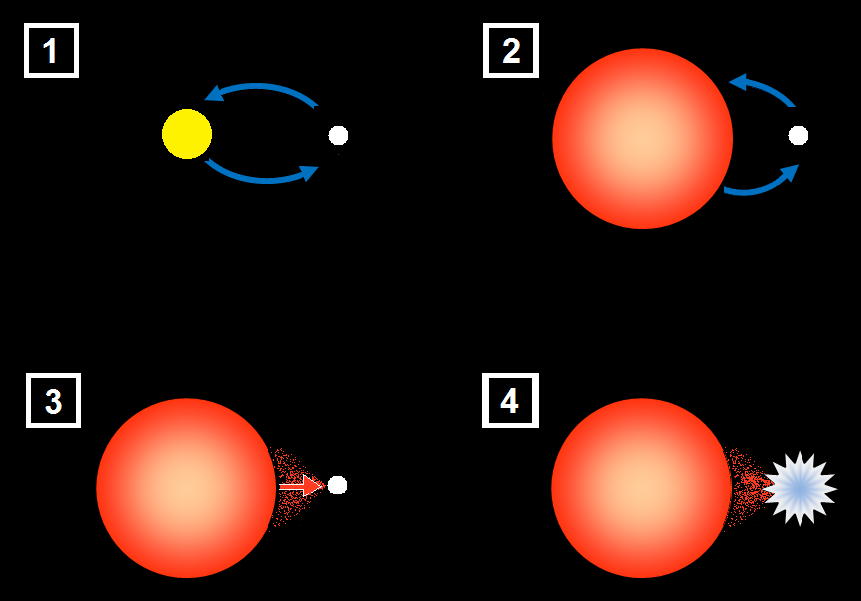
Attribution: FT2, CC0, via Wikimedia Commons
Page URL: https://commons.wikimedia.org/wiki
Intermediate- Mass and Massive Stars (8-25 Solar Masses)
For stars with masses between 8 and 25 times that of the Sun, a different density unfolds. These stars become red super-giants as they undergo successive fusion cycles, burning heavier elements – hydrogen, helium, carbon, neon, oxygen, and eventually silicon until an iron core forms. Iron is unique because fusing it consumes energy rather than releasing it. Once the core is primarily iron, fusion halts, and the star can no longer counteract gravitational collapse.
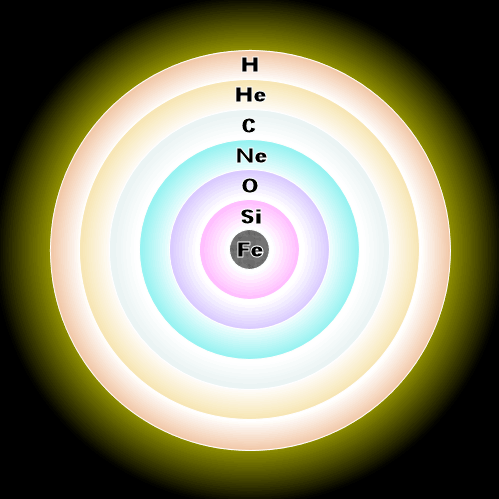
Attribution: R. J. Hall, CC BY-SA 3.0 http://creativecommons.org/licenses/by-sa/3.0/, via Wikimedia Commons
Page URL: https://commons.wikimedia.org/wiki/
This collapse triggers a type II supernova. The core implodes, then rebounds off the dense material at the center, sending shockwaves through the outer layers and causing a massive explosion. If the remaining core’s mass is between 1.4 and 3 times that of the Sun (the Tolman-Oppenheimer-Volkoff limit), it will collapse into a neutron star.
Very Massive Stars (> 25 Solar Masses)
Stars with masses exceeding 25 times that of the Sun face even more extreme fates. These massive stars burn through their fuel quickly, eventually forming an iron core. However, the collapse of their core can be so intense that the remnant mass surpasses the neutron degeneracy pressure limit ( around 3 solar masses ). When this happens, the core continues collapsing into a singularity, forming a black hole. This collapse is often accompanied by a hypernova, an incredibly powerful supernova, which may also be linked to gamma-ray bursts.
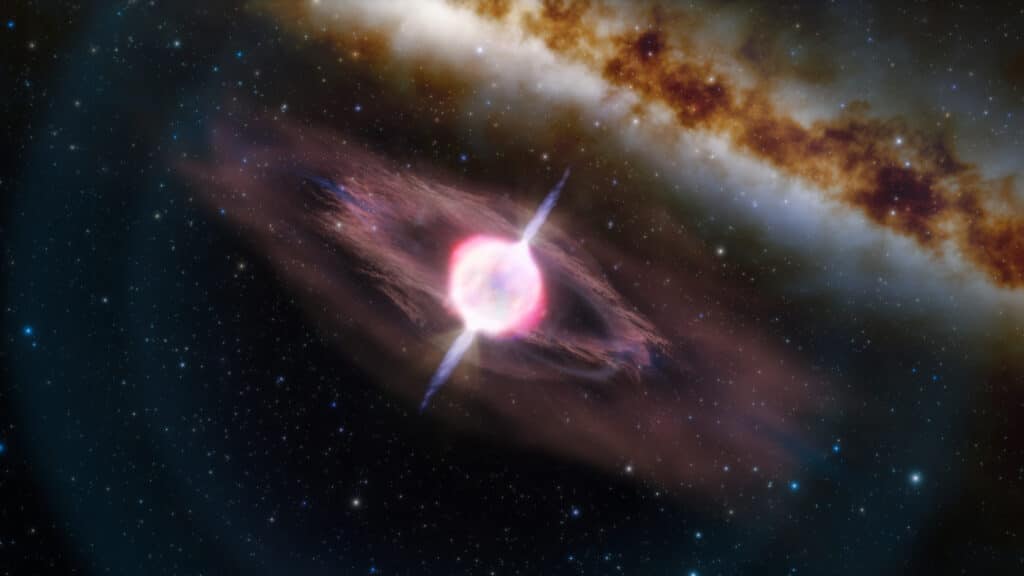
Attribution: International Gemini Observatory/NOIRLab/NSF/AURA/J. da Silva Image processing: M. Zamani (NSF’s NOIRLab), CC BY 4.0 https://creativecommons.org/licenses/by/4.0, via Wikimedia Commons
Page URL: https://commons.wikimedia.org/wiki/
Critical Mass Threshold: Chandrasekhar Limit
A key concept in understanding supernova formation is the Chandrasekhar Limit, which is about 1.4 times the mass of the Sun. This is the maximum mass a white dwarf can sustain before electron degeneracy pressure can no longer prevent gravitational collapse. In a binary system, if a white dwarf accumulates enough mass from its companion to exceed this limit, it triggers a type I supernova – a thermonuclear explosion that completely destroys the white dwarf.
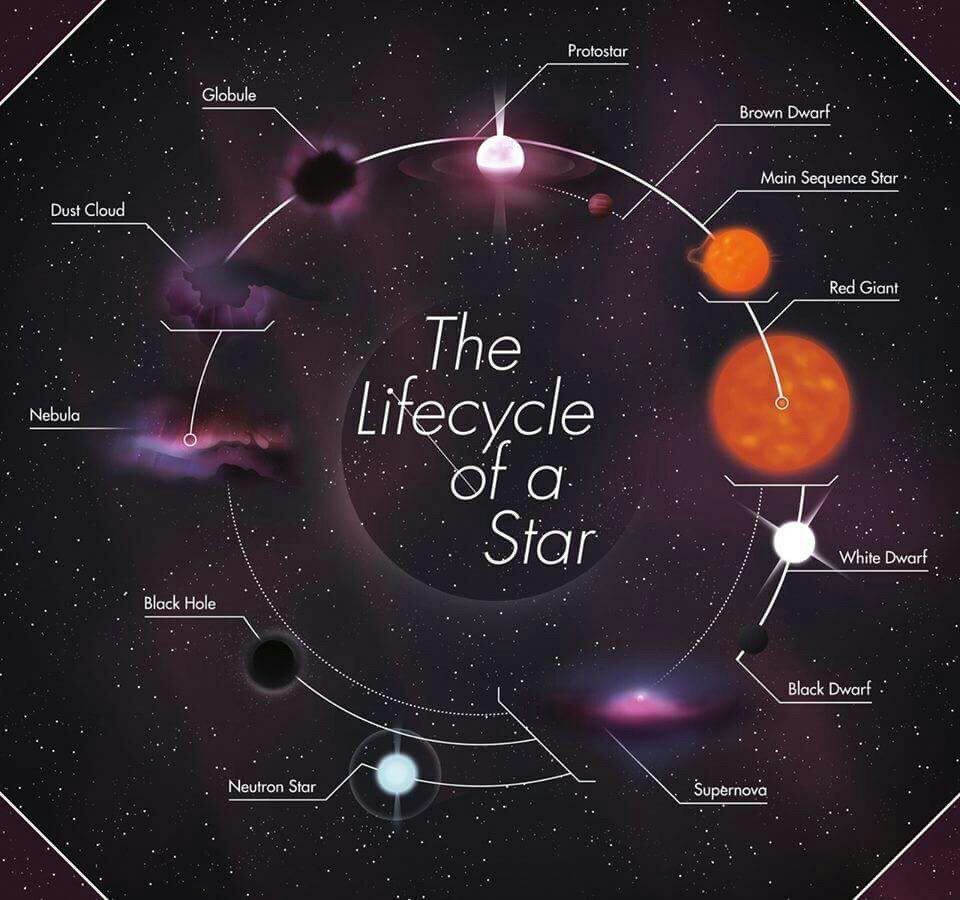
Attribution: Qaswara.awad, CC BY-SA 3.0 https://creativecommons.org/licenses/by-sa/3.0, via Wikimedia Commons.
Page URL: https://commons.wikimedia.org/wiki/File:The_Lifecycle_of_a_Star.jpg
Shockwave
The formation of the shockwave in a supernova and its outward propagation are key aspects of the star’s explosive death. This shockwave after the explosion is initially very powerful, but as it moves outward through the star’s inner layers, it loses energy by dissociating iron nuclei into individual protons and neutrons. This energy drain weakens the shockwave, leading to a stall about 150-200 kilometers from the core. At this point, it is unable to push through the overlying layers of the star.
Conclusion
Ongoing and future research on supernovae is expanding our understanding of stellar death, element formation, and the dynamics of the universe. With new technologies and the advancement of multi-messenger astronomy, scientists are poised to make groundbreaking discoveries that could reshape our understanding of fundamental physics and cosmology.
